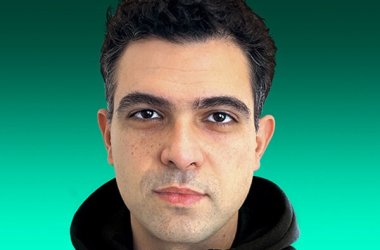
Louise Bou Rached, Director – Middle East, Turkey, and Africa at Milestone Systems, discusses the balance between public safety, privacy, and innovation in video management software.
Cities across the Middle East are rapidly advancing their smart infrastructure agendas, driving demand for secure, flexible, and future-ready surveillance solutions. Louise Bou Rached, Director – Middle East, Turkey, and Africa at Milestone Systems, spoke to Sandhya D’Mello, Technology Editor, CPI Media Group, and explained how open platform video management software is helping public safety authorities protect citizens while upholding data privacy.
Louise highlighted the role of AI-driven analytics in managing large-scale events, the importance of scalable deployments for major city gatherings, and strategies for integrating legacy systems with next-generation technologies — all with the goal of building agile, trusted, and resilient urban environments.
Interview Excerpts :
How can public safety authorities ensure data privacy and governance compliance when deploying crowd-focused video surveillance and analytics?
Systems that protect people’s rights, more than simply meeting safety standards, strengthen public trust in their security. Enabling data privacy when it comes to public safety starts with a clear data governance policy, specifying what data is collected, how it’s stored, who can access it, and under what conditions it can be used. When analysing crowd data in busy areas such as transport hubs, events, or public spaces, it’s important to minimise intrusion. For instance, avoid facial recognition unless absolutely necessary and ensure that the system complies with local data protection laws. At Milestone, our open-platform software allows public safety bodies to implement strict access controls, maintain audit logs and integrate with best-in-class cybersecurity and compliance tools. In addition to that, we encourage authorities to take a privacy-by-design approach by working with legal, technical, and community stakeholders from day one, ensuring that they take a more proactive approach towards security and privacy, ascertaining that the public understands how data is being used and, more importantly, why.
What role does open platform video management software play in building agile, future-ready smart city infrastructure?
Open platform video management software is the backbone of any smart city that wants to remain agile. No city can predict what technology it’ll need five or ten years down the line. Over time, needs evolve, challenges shift, and solutions that seemed futuristic a few years ago have become the standard. An open platform gives cities the freedom to integrate new tools as they become available, whether that’s AI-powered analytics, traffic sensors, license plate recognition, or even environmental monitoring, without having to rebuild their entire infrastructure from scratch. We have seen that cities using open platforms tend to move faster, make better decisions, and respond more effectively in critical situations. We are now creating a connected ecosystem where video data can be combined with other sources to give a more complete, real-time picture of what’s happening on the ground. Those insights become completely invaluable when managing large-scale events, responding to emergencies, or simply improving day-to-day operations.
“Since our Video Management Software is an open platform with no vendor lock-in, cities can keep evolving as new needs and innovations arise.”
In what ways is Milestone Systems leveraging AI-driven video analytics to enhance traffic and crowd safety during large-scale events?
Milestone’s goal is to minimise risks and detect issues early during large-scale events. Using AI-powered video analytics within our open-platform VMS, we enhance traffic flow and crowd management. The interface integrates tools like mobile cameras, drones, thermal sensors, and monitors, giving security teams real-time awareness and quick response capabilities. With advanced analytics, organisers can track attendee counts in specific zones, monitor crowd densities at key points, and ensure safe evacuation routes. The system also flags unusual behaviour, unauthorised access, or abandoned objects, sending instant alerts for rapid action. During Denmark’s Jelling Music Festival, nearly 40,000 attendees were monitored through 60+ cameras, tracking flows, spotting irregular activity, and detecting campsite fires via thermal cameras. A mobile command centre streamlined coordination between agencies, delivering real-time, actionable data and precise monitoring of people and vehicles, ensuring adaptive, coordinated safety strategies
Can you share examples of how scalable video technology has helped improve operational efficiency for government or city entities in the Middle East?
Taking an example of large-scale events like the FIFA World Cup, security and surveillance take top priority to quickly adapt and scale measures to meet the demands. Our VMS makes this possible by allowing us to quickly deploy and integrate hundreds of cameras and bring together multiple AI and analytics extensions from a variety of vendors within the same ecosystem. This means security teams also get real-time updates on what’s happening to be able to react instantly. For major city events, which have a clear start and end date, scalable video technology makes it possible to create a large but temporary security set-up. Once the event is over, such arrangements may serve a future purpose, such as providing anonymised data that could be used to inform safety protocols at future events.
As cities in the region continue to expand smart infrastructure, how can organisations best integrate legacy surveillance systems with next-generation tools?
As smart infrastructure becomes the new standard, the ability for businesses to seamlessly integrate their existing legacy surveillance systems with next-generation smart city tools becomes paramount. Leveraging open platform video management software (VMS), which offers broad device compatibility and scalability, offers this opportunity. An open architecture supports integration of both legacy and modern devices, enabling older analog or IP cameras to work alongside AI-enabled cameras and analytics within a unified platform. A hybrid approach combining on-premise systems with cloud-based analytics and storage makes your system more flexible, reliable, and helps you get the most value without causing big disruptions. It’s important to upgrade gradually, train your staff, and have a clear plan for replacing outdated devices and drivers. This helps keep your system secure and running smoothly. Taking a strategic, step-by-step approach to integration helps cities create strong, scalable surveillance setups that connect existing technologies with new, future-ready ones.





